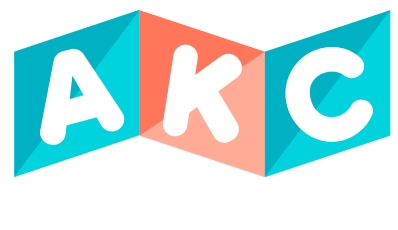Breastfeeding is a very common term and doesn’t necessarily require a definition. Breastfeeding is the process of feeding your baby milk directly from the breast. Mothers are advised to breastfeed babies for at least a year. However, we suggest feeding up to two years.
Breastfeeding is beneficial both for mothers and babies. It develops one of the strongest bonds between two persons and is also a good source of essential nutrients for babies. Breastfeeding also has certain health benefits for mothers. Women who breastfeed are the least to get breast cancer.
Some mothers are naturally unable to breastfeed. It could be due to serious health issues (such as HIV infection), medications that pass into breast milk, or insufficient glandular tissue (IGT). If you cannot breastfeed your infant, formula feeding is the only way to feed the baby.
Read more: When Should I Start Brushing My Baby’s Teeth?
Benefits of Breastfeeding for Mothers
There are numerous breastfeeding benefits for mothers, including:
- Protection from certain health conditions: It reduces the chances of breast cancer, ovarian cancer, and type 2 diabetes. It also minimizes heart diseases and high blood pressure.
- Lose weight with breastfeeding: It also helps in losing weight after giving birth.
- Builds a strong bond: Babies are naturally attracted to their mothers. They know their mother’s touch, scent, voice, and face. Breastfeeding strengthens this mother-baby bond that lasts forever.
Benefits of Breastfeeding for Babies
Breastfeeding also has benefits for babies, including:
- Reduces several risks: breastfed babies are least likely to develop allergies, asthma, ear infections, gastrointestinal problems, and respiratory infections.
- Reduces obesity: Babies who get fed from their mother’s breast are least likely to get obese. On the other hand, formula feeding may result in increasing obesity.
- Breast milk is full of nutrients: Breast milk is full of nutrients that are essential for babies’ health and development. It can also help to boost a baby’s immune system.
Breastfeeding is a natural process. Every mother must try feeding her baby through her breast at least for the first six months. It protects mothers and babies from developing certain health conditions, creates a strong bond, and provides essential nutrients.
Drawbacks of Breastfeeding
There are several drawbacks of breastfeeding as well.
- Breastfeeding can be time-consuming.
- Some mothers may not feel comfortable breastfeeding in public.
- Some babies may have difficulty latching on to the breast.
The downsides of breastfeeding are minimal and can be easily solved. If it is time-consuming, think about the essential nutrients your child will get from the natural milk. If you are uncomfortable feeding your child in public, consider using a breast pump and pouring the milk into a feeder for later use. For babies with latching problems, take guidance from the web or a pediatrician.
Read more: 13 Tips for Preventing Infections Before, During, and After Pregnancy
Different Positions to Breastfeed
There are several positions mothers can use to breastfeed their babies. The most common position is the cradle hold, where the baby is cradled in the arm and fed from the breast. Other breastfeeding positions include the cross-cradle hold, the football hold, and the side-lying position.
Each mother and baby pair is unique, so it is essential to experiment with different positions to find what works best. Some mothers are more comfortable breastfeeding in certain positions, while others find that their babies latch on more quickly in certain positions. The best position is the one which is most comfortable and convenient for the mother and baby.
Breastfeeding in different positions can also be helpful if a baby is having trouble latching on or if a mother is experiencing pain during breastfeeding. Different positions also helps in openning the breast and making it easier for the baby to latch on. If a mother is experiencing pain, different positions can help to relieve pressure on specific areas of the breast.
There are many breastfeeding benefits for mothers and babies. Different positions can help to make breastfeeding more comfortable and convenient for the mother and baby. Experimenting with different positions is an essential part of finding what works.
Getting Your Baby to Latch on
Getting your baby to latch on correctly when you start breastfeeding can be challenging. However, it is important to persevere as proper latching is essential for successful breastfeeding.
Breastfeeding experts recommend using different positions to help your baby latch on correctly. You may also find it helpful to use a nipple shield. Nipple shields are thin, silicone covers that go over your nipple and are available at most pharmacies.
Once you and your baby have mastered the proper latch, breastfeeding will become much more manageable. Not only is it convenient (no need to pack bottles or formula), but it also provides many benefits for you and your baby.
Read more: Feeding Solid Food to Your 1 to 3-Month-Old Baby
Medical Considerations with Breastfeeding
There are many medical benefits of breastfeeding for both mother and child. Breastfeeding can reduce the risk of certain types of cancer, such as breast and ovarian cancer. It can also help lower obesity, cardiovascular disease, and type 2 diabetes risk.
Breastfeeding can also help to improve bonding between mother and child. The skin-to-skin contact that occurs during breastfeeding helps to promote bonding and attachment. Breastfeeding can also help to ease the baby’s transition into the world outside the womb.
In addition, breastfeeding can have economic benefits for families. Breast milk is free and does not require special equipment or formula. Families who breastfeed may also save money on healthcare costs.





